ESL Idea Co-opted By UEFA: The New Champions League Format Proves a Worthy Concept

With just five games remaining in the maiden edition of the revamped UEFA Champions League, the excitement it has generated is undeniable. And for that, credit shouldn’t go solely to UEFA, but also to the original proponents of the European Super League.
If you’re enjoying the format of this season’s Champions League, chances are you would have embraced the ESL, because this was their idea first. UEFA only adopted it in a strategic move to contain the growing threat posed by the breakaway project.
UEFA adopted a format reminiscent of the much-maligned breakaway European Super League tournament proposed by a group of founders led by Real Madrid president Florentino Perez in April 2021.
While the idea faced widespread condemnation and eventually collapsed after a series of legal battles with UEFA, who claimed a minority to heading the affairs of European football, the idea of the ESL has breathed new life into Europe's premier club competition.
ESL Deserves The Credits for New Found UCL Excitement
UEFA first unveiled the new Champions League format in April 2021 during an Executive Committee meeting at its headquarters in Nyon, Switzerland—coincidentally, around the same time the European Super League was announced by its 12 founding clubs.
Though the ESL ultimately collapsed under the weight of public and institutional outrage, it has inadvertently reshaped the Champions League into a more intense and competitive spectacle.
The new Champions League format overhaul borrows from the ESL ambition; more matches between elite clubs, a broader stage, and then more importantly, an increased financial incentive.
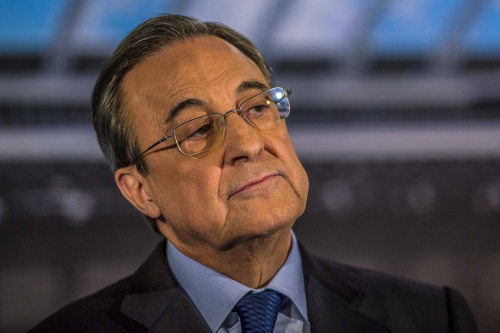
The new format, known as the Swiss model, features 36 teams competing in a single league table. Each club plays eight varied fixtures against a range of elite opponents, unlike the previous system, which used seeding pots to form groups and often limited head-to-head clashes between Europe’s top sides.
This new format has not only added excitement to the competition but also reduced the number of meaningless fixtures, ensuring that every game carries weight, as each position in the standings directly influences the difficulty of the knockout path.
The result has been a captivating campaign. Three of the top four teams from the league phase, Barcelona, Arsenal, and Inter, have advanced to the semi-finals, reinforcing the idea that the best are being saved for last.
They are joined by PSG, who knocked out league leaders Liverpool, as all four clubs secured well-earned victories over their respective quarter-final opponents in the inaugural edition of the league-phase format.
More Elite Matches
Nearly 35 percent of the 144 league-phase matches, excluding knockouts, were contested between teams from Europe’s top five leagues. The high count of 50 such fixtures delivered a wealth of thrilling encounters for fans.
The final league standings reflected the dominance of the elites, with only clubs from the top five leagues securing top-eight finishes and automatic passage to the round of 16.
Remarkably, all 24 teams that advanced came from Europe’s top eight leagues, with the sole exception of Scottish side Celtic, who defied expectations by progressing in 21st place.
Following the conclusion of the league phase, the knockout stages immediately served more elite matchups. The elimination playoff round, contested by teams ranked ninth to 24th, ultimately saw only clubs from Europe’s top eight leagues progress.
It was in this round that the world witnessed the top guns go head-to-head, such as the winners of the last two editions, Real Madrid and Manchester City. Also, Paris Saint-Germain took on Brest, AS Monaco entertained Benfica, and Juventus played PSV Eindhoven.
In the round of 16, the tournament further delivered world-class fixtures: Liverpool faced Paris Saint-Germain, the Madrid derby saw Real take on Atlético, Bayern Munich battled Bayer Leverkusen in an all-German showdown, and Borussia Dortmund hosted Lille—all played over gripping two-legged ties.
By the quarter-finals, only clubs from Europe’s top five leagues remained, with four of them having finished in the top eight of the league phase.
While this narrowed the field, it was due in part to traditional powerhouses like Real Madrid and Bayern Munich, who, despite not securing a top-eight finish, found their form in the knockout rounds.
Aston Villa returned to the Champions League stage for the first time since the year following their 1982 triumph, taking on PSG in a historic clash.
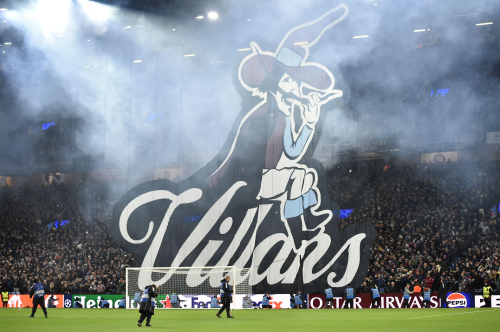
Arsenal and Real Madrid rekindled their infamous rivalry and finally had their long-awaited showdown. Inter locked horns with Bayern Munich in the knockouts for only the third time, while Barcelona squared off against Borussia Dortmund.
With so many elite battles already served, and just five games remaining, it’s hard not to admire the spectacle this format has delivered, and to wonder just how brilliant the European Super League might have been.
A Competition Spoilt by Elite Fixtures
Liverpool, although unfortunate to be drawn against PSG in the round of 16, maintained an unbeaten run before their loss to PSV in their final group game in Eindhoven. Arguably, the Premier League leaders were the best of the league phase.
The Reds dealt with legendary teams like AC Milan, Real Madrid, and other top-flight teams like RB Leipzig, Bologna, Lille, and Girona, picking up 21 points from a possible 24.
Unfortunately, Arne Slot saw his side crumble over two legs against PSG Paris Saint-Germain in the round of 16. Even though it was 1-1 and aggregate, and the Paris team won on penalties, it was clear there was one better team throughout the tie.
Barcelona produced numerous magical moments during the league run, finishing second to Liverpool in the final standings. After losing their first game in Monaco, they won six straight games before the 2-2 draw with Atalanta in their final group game.
Along the way, Hansi Flick's side delivered a stunning 4–1 thrashing of Bayern Munich at Camp Nou, sandwiched between a 5–1 victory and a commanding 4–0 win over Sevilla and Real Madrid, respectively, in October.
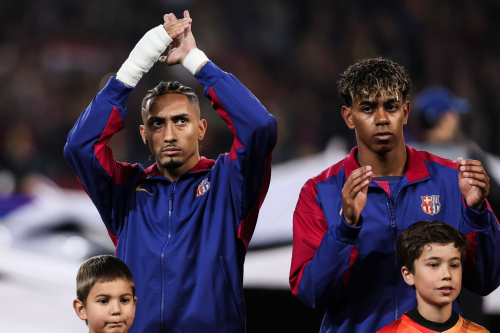
The Blaugrana have been involved in several high-scoring encounters, including a 5–0 victory over Young Boys, a 5–2 win at FK Crvena Zvezda, and thrilling matches like a 3–2 triumph over Dortmund and the unforgettable 5–4 comeback against Benfica.
Arsenal, too, has proven its mettle among Europe’s elite. Mikel Arteta's side has maintained an elite status, ranking among the best both defensively and offensively, averaging 2.5 goals scored and just 0.6 conceded per game.
Their only defeat came in a narrow 1–0 loss to Inter at the Giuseppe Meazza, with a controversial Hakan Calhanoglu penalty just before half-time proving the difference.
They’ve cruised past top-five league opponents like PSG, Monaco, and Girona, while setting a new record with a 7–1 thrashing of PSV Eindhoven in the first leg of their round of 16 tie in the Netherlands.
Their long-awaited meeting with Real Madrid was finally set, as the two were drawn against each other in the quarter-finals. Despite both being regulars in the competition, Real Madrid and Arsenal had only previously met once in the Champions League, a round of 16 clash in 2006.
The world had waited years to see these two giants clash again, and it wasn’t until this edition that it finally came to pass. Real Madrid seeks revenge, while Arsenal sees it as their favoured fixture, even though they've met that one time.
Arsenal’s 19-year chant of "give us Real Madrid" was finally answered, and they certainly claimed it in the way they had always dreamed, doing the double over the defending champions, becoming the first side to dump them out in the quarter-finals since AS Monaco in 2004.
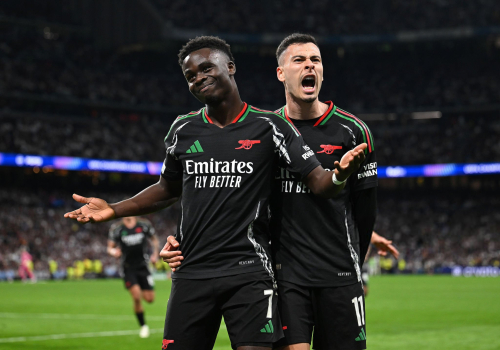
Inter continue their impressive run, reaching a second semi-final in three years after edging Bayern Munich 4–3 on aggregate.
On their path to the last four, they’ve overcome Arsenal, Monaco, and Leipzig, all while boasting the best defensive record in the competition, rarely conceding from open play.
PSG, the only dark horse in the semi-finals, knocked out Liverpool, who topped the table after the eight league-phase matches, in the round of 16.
They then saw off another English side, Aston Villa, before setting up a semi-final clash with yet another Premier League giant, Arsenal, who had already beaten them early in the campaign.
It has been a thrilling tournament so far, with the level of competition significantly elevated by the regular clashes between top-tier teams.
Increased Self-Generated Revenue
More fixtures against and between elite teams increase the likelihood of full stadiums on matchdays, thereby boosting clubs’ matchday revenue through higher ticket sales.
For example, Inter faced five clubs from Europe’s top five leagues during the league phase, and home fixtures against Manchester City, Arsenal, RB Leipzig, and AS Monaco saw the Giuseppe Meazza filled to satisfying capacity on all four occasions.
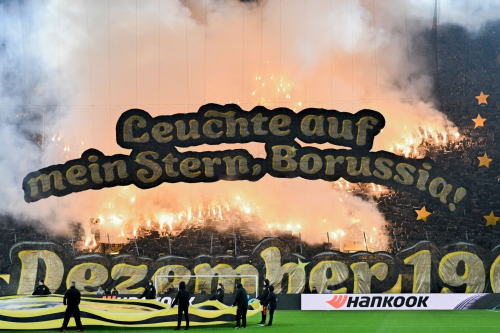
In past seasons, clubs would typically face just one opponent from a top-five league in their group, and by the time they met, the fixture might carry little significance, leaving fans less enthused to attend.
As it has been for the Nerazzurri, so too has it been for several other top clubs, who have managed to boost their revenue beyond the increased earnings provided by UEFA.
Increased Chances of Individual and Collective History
With more matches each season, players have greater opportunities to set new statistical records, and clubs can do the same on various fronts.
In the current campaign, Serhou Guirassy has set a new record for the most goals scored by an African in a single Champions League season, while Raphinha has become the first player to register 10+ goals and 5+ assists in the same edition.
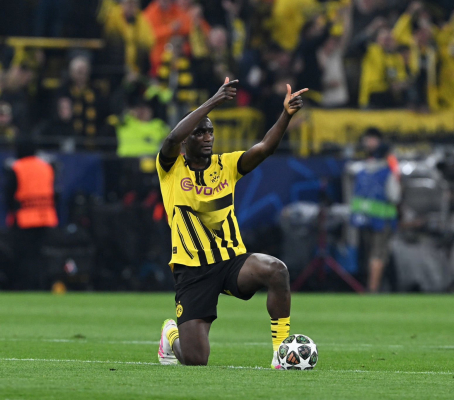
In the future, a single league could produce a record-breaking seven participants in one Champions League edition, if certain conditions are met.
This scenario would be highlighted by the said league producing both the Champions League and Europa League winners in a season, with neither of those clubs finishing in the league’s top five.
More and more records will be broken, with fresh ones will be set. The potential is unending, and more opportunities are continuously opening up.
The Shortcomings of UEFA
While UEFA’s revamped Champions League format draws inspiration from the European Super League concept, it remains a distinct competition, governed under UEFA’s existing structure.
The governing body has raised the financial incentives for participating clubs under the new model. However, these earnings, though increased, still fall short of the significantly larger sums that were proposed by the ESL.
New Format: A Win for All Stakeholders
The new UEFA Champions League format represents a win for all stakeholders, UEFA, the clubs, and, importantly, the fans.
For UEFA and participating clubs, the expanded league phase means increased revenue through more worthwhile fixtures that attract audiences and boost commercial opportunities.
For fans, it delivers a richer experience, with more meaningful matches between the heavyweights, fewer dead rubbers, and a consistently higher level of competition throughout the campaign.
While UEFA may wear the crown, the blueprint came from the rebels. Credits, though quietly, are due to the ESL for sparking the necessary revolution.
Europe's premier club competition, as well as the second and third tiers, Europa and Conference Leagues respectively, are richer for it, not just in revenues, but also in excitement and competitiveness.

